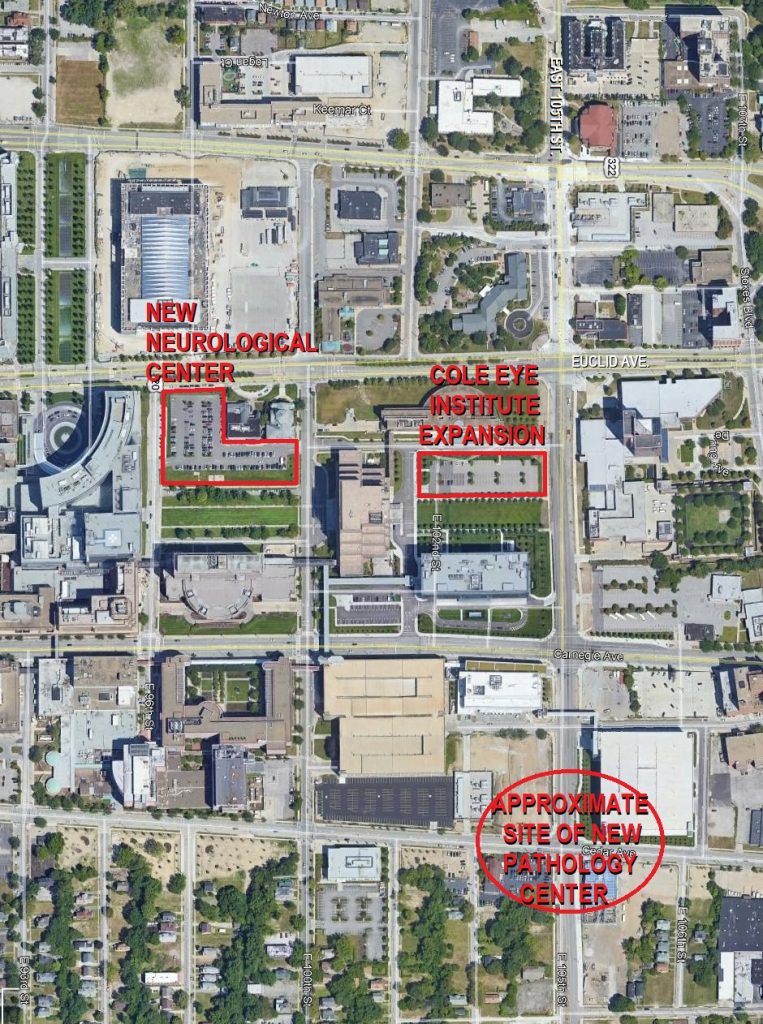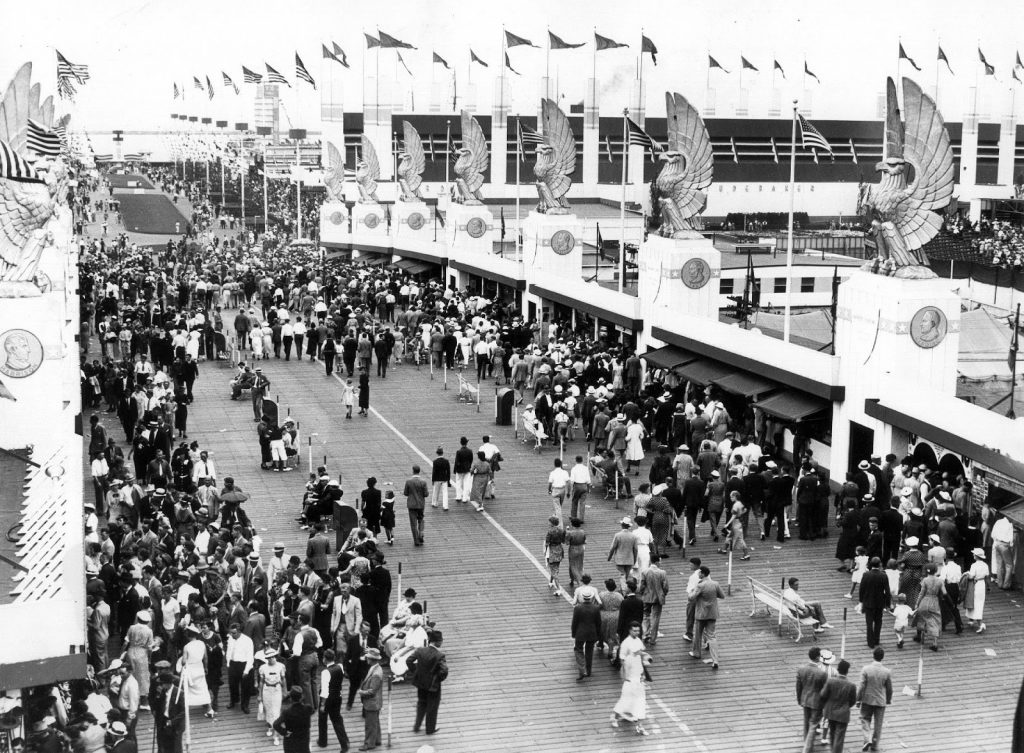A significant real estate development next to and possibly above the rail rapid transit line in Cleveland’s Ohio City neighborhood moved a step closer to reality today. That occurred when the Greater Cleveland Regional Transit Authority‘s (GCRTA) Board of Trustees authorized staff to execute a development and use agreement with Carnegie Management and Development Corp. of Westlake.
The eventual agreement will include three parcels of land south of Abbey Avenue and west of Columbus Road, south of Lorain Avenue, totaling 5.6 acres. Also, the agreement will include air rights over GCRTA’s Red Line that links the airport, downtown, University Circle and Windermere.
A potential development with public plazas over the tracks could provide seamless pedestrian linkages between the Duck Island neighborhood to the east with the Ohio City’s Market Square area to the west.
That includes Harbor Bay’s new development where site preparation work is already underway. It could also enhance the Ohio City rail station with a second trackside platform entrance or even replace the existing station headhouse that was built 30 years ago.
Board documents show that the deal between GCRTA and Carnegie will create a unique public-private partnership the likes of which GCRTA has never attempted before. However, these partnerships are encouraged by the Federal Transit Administration to promote joint development opportunities for transit agencies, according to GCRTA documents.
Such developments are called Transit Oriented Developments (TODs) which have special design features including the proximity of high-frequency transit services, pedestrian friendly settings, density, mixed use, public spaces and de-emphasized parking.
The uniqueness of the deal is that a single-asset corporation will be created for this development and own it for the life of the asset. After GCRTA sells land and air rights to the new Carnegie-led corporation, GCRTA will retain an ownership position in the corporation.
GCRTA’s ownership stake will be a non-recourse, non-dilutable position that will provide GCRTA with long-term revenue for the life of the TOD asset, agency documents show.
The sale price has yet to be determined, pending a preliminary outline of the development project’s physical scope and an FTA-compliant appraisal of the properties involved. However, GCRTA’s ownership stake will be no less than 3 percent, per the board-approved development agreement.
Between the sale of the property and GCRTA’s ownership stake in the single-asset corporation, the transit authority expects to generate long-term revenue. That revenue can be used as part of a local funding share for federal loans and grants to expand or substantially renovate the Ohio City rail station.
“This TOD will enhance the West 25th Street Rail Station and promote increased use of the Red Line,” according to GCRTA staff comments in the board-approved resolution. “The project will provide GCRTA with significant revenue including the fair market, appraised value of the property and…(an) ownership position in the legal entity that owns the project for the life of the project.”
Carnegie has typically developed on suburban or exurban greenfields where no structures had existed before. Their first urbanized site re-use is the One Lakewood Place development. With it, two sources say Carnegie has surprisingly discovered that redeveloping an urbanized site is more expensive than building on a fresh greenfield site.
That has caused delays and a potential funding gap for the One Lakewood Place project, as well as different expectations and outcomes sought by the new Lakewood Mayor Meghan George administration, according to the two sources.
Per the board-approved agreement, GCRTA can refuse to execute the development and use agreement with Carnegie and terminate the TOD process at any time. This TOD project has been under negotiation between Carnegie and GCRTA for more than a year. Requests for qualifications were issued by GCRTA in August 2018.
Due to many GCRTA staff working remotely during the pandemic emergency, no GCRTA staff could be reached for comment prior to publication of this article.
Similarly, a message left with a Carnegie receptionist for Rustom Khouri III, Carnegie’s director of business development and pre-construction services was not returned prior to publication.
END






